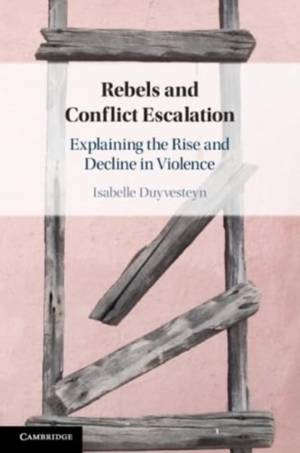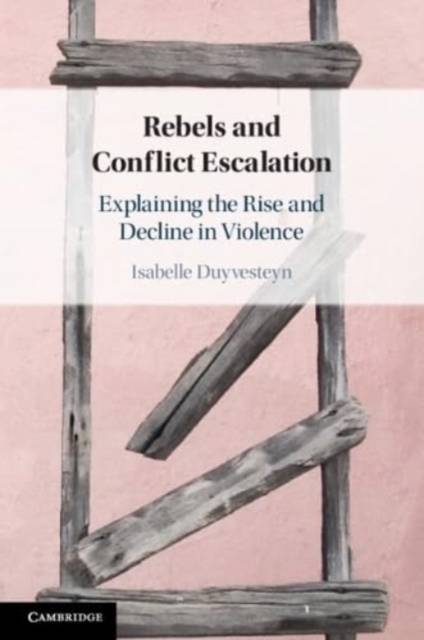
Door een staking bij bpost kan je online bestelling op dit moment iets langer onderweg zijn dan voorzien. Dringend iets nodig? Onze winkels ontvangen jou met open armen!
- Afhalen na 1 uur in een winkel met voorraad
- Gratis thuislevering in België vanaf € 30
- Ruim aanbod met 7 miljoen producten
Door een staking bij bpost kan je online bestelling op dit moment iets langer onderweg zijn dan voorzien. Dringend iets nodig? Onze winkels ontvangen jou met open armen!
- Afhalen na 1 uur in een winkel met voorraad
- Gratis thuislevering in België vanaf € 30
- Ruim aanbod met 7 miljoen producten
Zoeken
Rebels and Conflict Escalation
Explaining the Rise and Decline in Violence
Isabelle Duyvesteyn
Paperback | Engels
€ 50,45
+ 100 punten
Uitvoering
Omschrijving
Violence during war often involves upswings and downturns that have, to date, been insufficiently explained. Why does violence at a particular point in time increase in intensity and why do actors in war decrease the level of violence at other points? Duyvesteyn discusses the potential explanatory variables for escalation and de-escalation in conflicts involving states and non-state actors, such as terrorists and insurgents. Using theoretical arguments and examples from modern history, this book presents the most notable causal mechanisms or shifts in the shape of propositions that could explain the rise and decline of non-state actor violence after the start and before the termination of conflict. This study critically reflects on the conceptualisation of escalation as linear, rational and wilful, and instead presents an image of rebel escalation as accidental, messy and within a very limited range of control.
Specificaties
Betrokkenen
- Auteur(s):
- Uitgeverij:
Inhoud
- Aantal bladzijden:
- 284
- Taal:
- Engels
Eigenschappen
- Productcode (EAN):
- 9781009009256
- Verschijningsdatum:
- 21/03/2024
- Uitvoering:
- Paperback
- Formaat:
- Trade paperback (VS)
- Afmetingen:
- 152 mm x 229 mm
- Gewicht:
- 385 g

Alleen bij Standaard Boekhandel
+ 100 punten op je klantenkaart van Standaard Boekhandel
Beoordelingen
We publiceren alleen reviews die voldoen aan de voorwaarden voor reviews. Bekijk onze voorwaarden voor reviews.











